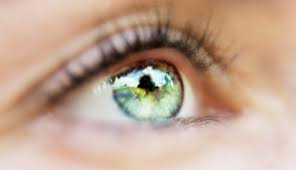The human eye, often referred to as the window to the soul, comes in a remarkable array of colors. The captivating diversity of eye colors has intrigued scientists, artists, and individuals alike for centuries. In this blog post, we will delve into the intricate genetics and fascinating factors that determine eye color, exploring the science behind this unique and beautiful human characteristic.
I. An Overview of Human Eye Colors:
- Definition: Eye color refers to the specific pigmentation of the iris, the colored part of the eye.
- Common Eye Colors: The most common eye colors include brown, blue, green, and hazel, but variations and combinations exist.
II. The Science of Eye Color:
- Genetics and Inheritance: Eye color is primarily determined by the combination of genetic factors inherited from parents.
- Role of Melanin: The amount and distribution of melanin, a pigment responsible for coloration, play a significant role in eye color.
III. The Role of Iris Structure:
- Iris Pigmentation: The concentration and arrangement of melanin in the iris affect eye color, with more melanin resulting in darker colors.
- Influence of Light Scattering: The structure of the iris and its interaction with light can influence eye color perception.
IV. Common Eye Colors and Their Characteristics:
- Brown Eyes: The most prevalent eye color worldwide, brown eyes have a higher concentration of melanin, resulting in a darker appearance.
- Blue Eyes: Blue eyes are associated with lower melanin levels and a scattering of light within the iris, creating a blue or grayish hue.
- Green Eyes: Green eyes often contain a combination of low to moderate melanin levels and a scattering of light, resulting in a greenish appearance.
- Hazel Eyes: Hazel eyes display a blend of colors, ranging from brown and green to gold and amber, due to a mix of melanin and light scattering.
V. Rare and Unique Eye Colors:
- Gray Eyes: Gray eyes are a result of low melanin levels and a high concentration of collagen in the iris.
- Amber Eyes: Amber eyes feature a golden or coppery coloration, influenced by a combination of melanin, light scattering, and other factors.
- Violet Eyes: Violet eyes are extremely rare and often result from a combination of low melanin levels and structural variations in the iris.
VI. Environmental Factors and Eye Color:
- Perception of Eye Color: Lighting conditions and surrounding colors can impact the perceived appearance of eye color.
- Eye Color Changes: Some individuals experience shifts in eye color due to factors such as lighting, emotions, or medical conditions.
VII. Eye Color Variations Across Ethnicities:
- Global Distribution: Eye color frequencies vary across different ethnic groups and geographical regions.
- Factors Influencing Variations: Historical migrations, intermixing of populations, and genetic diversity contribute to the range of eye colors observed worldwide.
Conclusion: The captivating world of human eye colors offers a rich tapestry of genetic, biological, and environmental influences. From the intricate interplay of melanin and iris structure to the wide spectrum of eye colors observed across different populations, our eyes serve as a unique and beautiful feature of human diversity. Exploring the science behind eye color not only deepens our understanding of genetics but also enhances our appreciation for the remarkable intricacies of the human body.




















Add Comment